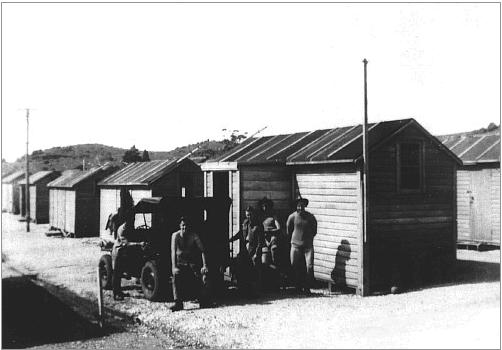The lifeboat came from the Niagra, which was sunk just north of New Zealand by a mine laid by the German Navy.
It was found at Devonport with some sprung planks, brought down to Man O'War Bay and repaired. It became the boat the men used for fishing and for escaping from the camp for weekends.
It was found at Devonport with some sprung planks, brought down to Man O'War Bay and repaired. It became the boat the men used for fishing and for escaping from the camp for weekends.
Because of Stony Batter's remoteness, and the distance between it and the landing areas at Man O'War Bay used for shipping in materials and supplies, two camps were needed for its service personnel.
The secret road built between Man O'War Bay and Stony Batter was over five kilometres long, and prying eyes had to be kept away from the material waiting to be cleared from the beach and foreshore, but there was not enough space there for a three-hundred-person camp.
The camps were very different in size. The top camp up at Stony Batter, not far from the fort, had beds for two-hundred and fifty men in two- four- or eight-man huts, as well as two two-bedroom houses and a recreation hall.
The bottom camp at Man O'War Bay had beds for no more than forty. But there were also five houses at the northern end of the bay for the officers and the married personnel who were essential to the project. Normally a man had to be a sergeant or higher to get a house, so there could have been as many as forty-five servicemen there.
Both camps had their own cookhouses and canteens.
Another reason for having two camps was the logistics of moving men and materials when the number of vehicles was limited. The normal complement was only two GMC's, a low loader and one or two jeeps.
...
Some of the huts from the camp later became baches (holiday dwellings) and cottages elsewhere on Waiheke. Some are still being used. You can see one in Goodwin Avenue, for example, about a third of the way up on the right if you are visiting the island. That dwelling was made by putting two cabins together.
The secret road built between Man O'War Bay and Stony Batter was over five kilometres long, and prying eyes had to be kept away from the material waiting to be cleared from the beach and foreshore, but there was not enough space there for a three-hundred-person camp.
The camps were very different in size. The top camp up at Stony Batter, not far from the fort, had beds for two-hundred and fifty men in two- four- or eight-man huts, as well as two two-bedroom houses and a recreation hall.
The bottom camp at Man O'War Bay had beds for no more than forty. But there were also five houses at the northern end of the bay for the officers and the married personnel who were essential to the project. Normally a man had to be a sergeant or higher to get a house, so there could have been as many as forty-five servicemen there.
Both camps had their own cookhouses and canteens.
Another reason for having two camps was the logistics of moving men and materials when the number of vehicles was limited. The normal complement was only two GMC's, a low loader and one or two jeeps.
...
Some of the huts from the camp later became baches (holiday dwellings) and cottages elsewhere on Waiheke. Some are still being used. You can see one in Goodwin Avenue, for example, about a third of the way up on the right if you are visiting the island. That dwelling was made by putting two cabins together.







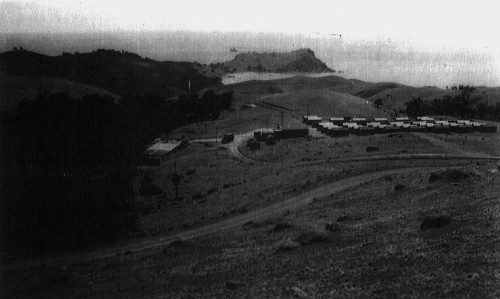
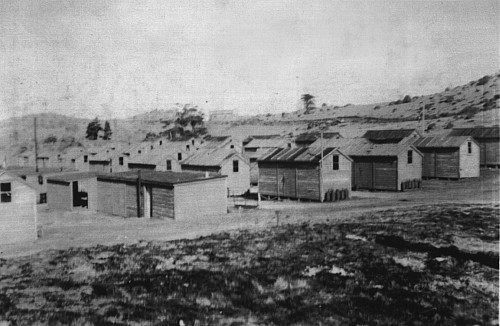
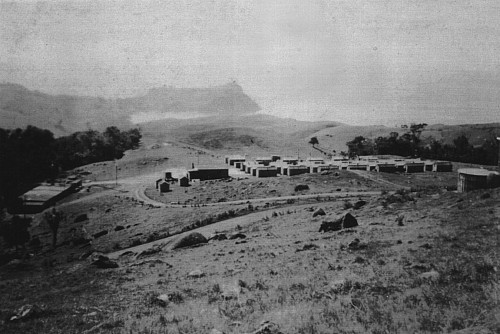
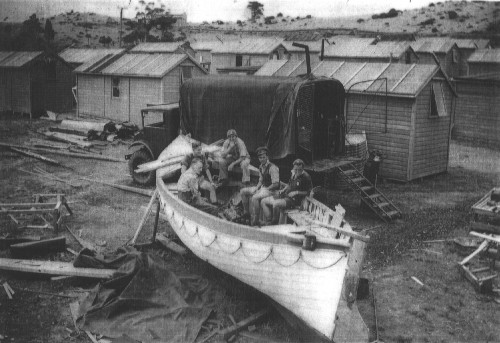
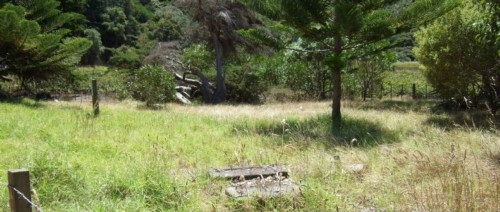
All that is left of the Bottom Camp at Man O' War Bay, Waiheke (this 2880 photo was taken looking over the fence beside the picnic table and barbeque at the northern end of the beach--over the road from the toilet)
